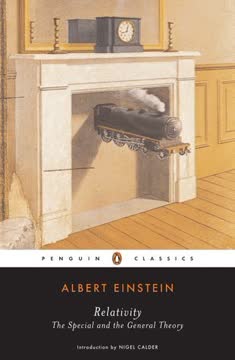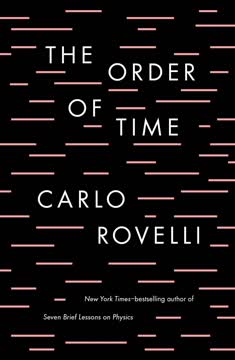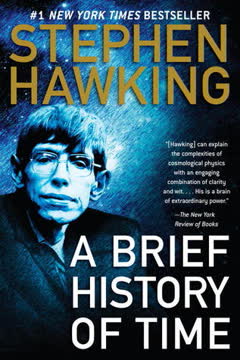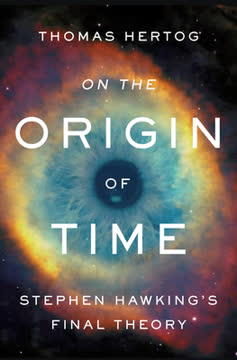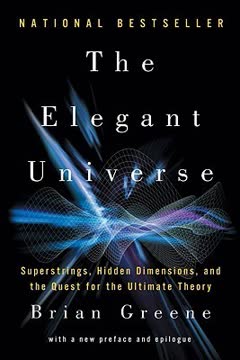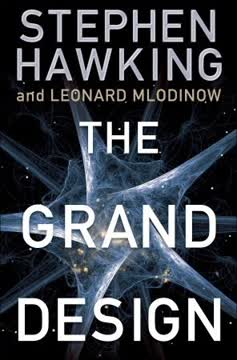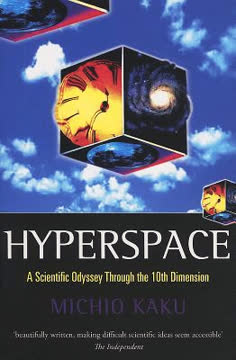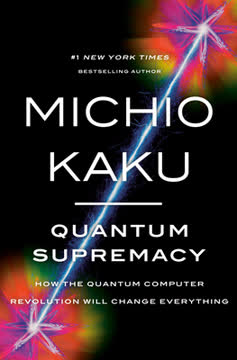نکات کلیدی
1. جستجوی یک نظریهی واحد برای همهچیز قرنهاست که فیزیک را به پیش میبرد
"این باید نظریهی نهایی میبود، یک چارچوب واحد که تمام نیروهای کیهان را متحد کرده و همهچیز را از حرکت جهان در حال گسترش تا رقصهای ریز ذرات زیراتمی هماهنگ کند."
زمینه تاریخی. جستجوی یک نظریهی واحد به یونان باستان برمیگردد، جایی که فیلسوفان سعی داشتند جهان را از طریق عناصر بنیادی توضیح دهند. این جستجو از طریق قوانین حرکت و گرانش نیوتن ادامه یافت که پایهگذار انقلاب صنعتی بود. قرن نوزدهم شاهد اتحاد الکتریسیته و مغناطیس توسط مکسول بود که به عصر الکتریکی منجر شد.
توسعههای مدرن. قرن بیستم دو نظریهی انقلابی را به ارمغان آورد:
- نسبیت انیشتین، که گرانش و کیهان را توضیح میدهد
- مکانیک کوانتومی، که دنیای زیراتمی را توصیف میکند
این نظریهها، در حالی که در حوزههای خود بسیار موفق بودهاند، همچنان با یکدیگر ناسازگارند. گرال مقدس فیزیک یافتن یک نظریهی واحد است که چهار نیروی بنیادی را متحد کند: گرانش، الکترومغناطیس، نیروی هستهای قوی و نیروی هستهای ضعیف.
2. نظریههای نسبیت انیشتین درک ما از فضا، زمان و گرانش را متحول کرد
"برای انیشتین، زمان بیشتر شبیه یک رودخانه بود. میتوانست در حین عبور از ستارهها و کهکشانها سرعت بگیرد یا کند شود."
نسبیت خاص. نظریهی انیشتین در سال 1905 نشان داد که:
- سرعت نور برای تمام ناظران ثابت است
- زمان برای اشیاء در حال حرکت با سرعت بالا کند میشود
- جرم و انرژی معادل هستند (E = mc²)
نسبیت عمومی. در سال 1915، انیشتین نظریهاش را برای شامل کردن گرانش گسترش داد:
- گرانش انحنای فضا-زمان ناشی از اشیاء با جرم زیاد است
- این پدیدههایی مانند:
- انحراف نور در اطراف ستارهها
- پیشروی مدار عطارد
- وجود سیاهچالهها را توضیح میدهد
نسبیت عمومی توسط مشاهدات متعددی تأیید شده است، از جمله شناسایی امواج گرانشی در سال 2015.
3. مکانیک کوانتومی طبیعت احتمالی ذرات زیراتمی را فاش کرد
"انیشتین نوشت که 'هرچه نظریهی کوانتومی موفقتر میشود، احمقانهتر به نظر میرسد.'"
اصول اصلی. مکانیک کوانتومی، که در دههی 1920 توسعه یافت، رفتار ماده و انرژی را در مقیاسهای اتمی و زیراتمی توصیف میکند:
- ذرات میتوانند به طور همزمان در چندین حالت وجود داشته باشند (همپوشانی)
- عمل اندازهگیری بر نتیجه تأثیر میگذارد (اثر ناظر)
- ذرات میتوانند در هم تنیده شوند و به طور آنی بر یکدیگر تأثیر بگذارند
پیامدهای فلسفی. این اصول درک شهودی ما از واقعیت را به چالش میکشد:
- آیا جهان به طور بنیادی احتمالی است؟
- آیا آگاهی نقشی در شکلدهی به واقعیت دارد؟
- آیا جهانهای متعددی وجود دارد که در آنها تمام نتایج ممکن رخ میدهد؟
با وجود طبیعت غیر شهودیاش، مکانیک کوانتومی در توضیح پدیدهها و امکانسازی فناوریهایی مانند لیزرها و ترانزیستورها بسیار موفق بوده است.
4. مدل استاندارد سه تا از چهار نیروی بنیادی را متحد میکند، اما گرانش همچنان فرار است
"به تدریج، نظریهی جدیدی از این هرج و مرج پدیدار شد که به آن مدل استاندارد میگویند."
اجزا. مدل استاندارد، که در دههی 1970 توسعه یافت، تمام ذرات بنیادی شناخته شده و سه تا از چهار نیروی بنیادی را توصیف میکند:
- ذرات:
- کوارکها (6 نوع)
- لپتونها (شامل الکترونها و نوترینوها)
- بوزونها (ذرات حامل نیرو)
- نیروها:
- نیروی هستهای قوی (کوارکها را به هم میچسباند)
- نیروی هستهای ضعیف (شکست رادیواکتیو)
- نیروی الکترومغناطیسی
موفقیتها و محدودیتها. مدل استاندارد:
- به طور دقیق تعاملات ذرات را پیشبینی میکند
- به کشف بوزون هیگز در سال 2012 منجر شد
- گرانش را شامل نمیشود
- به بسیاری از پارامترهای دلخواه نیاز دارد
- نمیتواند ماده تاریک یا انرژی تاریک را توضیح دهد
5. نظریهی رشتهای چارچوبی جدید و رادیکال برای متحد کردن تمام نیروها و ذرات پیشنهاد میکند
"نظریهی رشتهای مانند چاه نفتی بود که ناگهان جویباری از معادلات جدید را فوران میکرد."
مفهوم اصلی. نظریهی رشتهای پیشنهاد میکند که تمام ذرات و نیروها در واقع ارتعاشات رشتههای کوچک و یکبعدی هستند:
- حالتهای ارتعاشی مختلف به ذرات مختلف مربوط میشوند
- به 10 یا 11 بعد نیاز دارد (بیشتر آنها "جمع شده" و نامرئی هستند)
- به طور طبیعی گرانش را شامل میشود، بر خلاف مدل استاندارد
چالشها. با وجود زیباییاش، نظریهی رشتهای با موانع قابل توجهی مواجه است:
- هنوز هیچ شواهد تجربی وجود ندارد
- انرژیهای بسیار بالایی برای آزمایش مستقیم مورد نیاز است
- نسخههای متعددی از نظریه وجود دارد (که توسط نظریهی M متحد شدهاند)
- پیشبینی میکند که "چشمانداز" وسیعی از جهانهای ممکن وجود دارد
نظریهی رشتهای همچنان بسیار بحثبرانگیز است، با منتقدانی که استدلال میکنند این نظریه غیرقابل آزمایش است و حامیانی که معتقدند این بهترین مسیر برای دستیابی به یک نظریهی واحد است.
6. نظریهی همهچیز ممکن است ریشهها و سرنوشت جهان را توضیح دهد
"شاید جهان ما در ابتدا از نوسانات کوانتومی در هیچ چیز به وجود آمده باشد."
پیامدهای کیهانشناختی. یک نظریهی واقعی از همهچیز پیامدهای عمیقی برای درک ما از کیهان خواهد داشت:
- ریشههای جهان:
- توضیح انفجار بزرگ
- امکان وجود یک جهان چندگانه
- تکامل جهان:
- تورم و گسترش
- تشکیل کهکشانها و ساختار بزرگمقیاس
- سرنوشت جهان:
- سرنوشت نهایی (انجماد بزرگ، انقباض بزرگ یا پاره شدن بزرگ)
- امکان وجود جهانهای چرخهای
سؤالات حلنشده. معماهای کلیدی که یک نظریهی واحد ممکن است به آنها پاسخ دهد:
- ماهیت ماده تاریک و انرژی تاریک
- وجود ابعاد یا جهانهای دیگر
- امکان سفر در زمان یا کرمچالهها
7. درک کیهان سؤالات عمیقی دربارهی معنا و وجود را مطرح میکند
"سؤال همهی سؤالات برای بشریت، مشکلی که پشت همهی دیگر مشکلات قرار دارد و جالبتر از هر یک از آنهاست، تعیین جایگاه انسان در طبیعت و رابطهاش با کیهان است."
پیامدهای فلسفی. جستجوی یک نظریهی واحد به ناچار به سؤالات عمیق وجودی منجر میشود:
- آیا جهان هدف یا طراحی دارد؟
- آیا نقشی برای یک خالق یا خدا در کیهان وجود دارد؟
- چگونه میتوانیم در یک جهان بالقوه محدود معنا پیدا کنیم؟
دیدگاه علمی. در حالی که علم نمیتواند به طور مستقیم به این سؤالات پاسخ دهد، چارچوبی برای تأمل فراهم میکند:
- اصل انسانمحوری پیشنهاد میکند که جهان ما به طور خاص برای زندگی تنظیم شده است
- نظریهی جهان چندگانه پیشنهاد میکند که بیشماری جهان با ویژگیهای مختلف وجود دارد
- وسعت و زیبایی کیهان الهامبخش شگفتی و حیرت است
در نهایت، جستجوی یک نظریهی واحد تنها به درک دنیای فیزیکی مربوط نمیشود، بلکه به جایگاه ما در آن و ماهیت وجود خودمان نیز مربوط میشود.
آخرین بهروزرسانی::
FAQ
What's "The God Equation: The Quest for a Theory of Everything" about?
- Unified Theory Goal: The book explores the quest for a single framework that unites all the forces of the universe, from the motion of galaxies to subatomic particles.
- Historical Journey: It traces the history of physics, from ancient dreams of unification to modern string theory, highlighting key scientific revolutions.
- String Theory Focus: The narrative centers on string theory as the leading candidate for a theory of everything, explaining its potential to unify gravity with quantum mechanics.
- Philosophical Implications: The book also delves into the philosophical questions about the universe's origin, structure, and meaning.
Why should I read "The God Equation: The Quest for a Theory of Everything"?
- Comprehensive Overview: It provides a thorough overview of the history and current state of theoretical physics, making complex ideas accessible.
- Scientific Insight: Readers gain insight into the minds of great physicists like Einstein and Hawking and their contributions to the quest for unification.
- Philosophical Exploration: The book addresses profound questions about the universe's purpose and the existence of a grand design.
- Engaging Narrative: Michio Kaku's engaging writing style makes the intricate world of physics both understandable and fascinating.
What are the key takeaways of "The God Equation: The Quest for a Theory of Everything"?
- Unification Dream: The pursuit of a unified theory has been a long-standing goal in physics, aiming to explain all natural forces with a single equation.
- String Theory's Role: String theory is currently the most promising candidate for a theory of everything, proposing that the universe is made of tiny vibrating strings.
- Challenges and Criticisms: Despite its potential, string theory faces significant challenges, including lack of experimental evidence and the landscape problem.
- Philosophical Questions: The book raises questions about the universe's origin, the possibility of a multiverse, and the role of a creator or grand design.
How does Michio Kaku explain string theory in "The God Equation"?
- Vibrating Strings Concept: Kaku explains that string theory posits the universe is composed of tiny, vibrating strings, with each vibration corresponding to a different particle.
- Dimensionality: The theory suggests that the universe has ten dimensions, with six of them curled up and unobservable at our scale.
- Inclusion of Gravity: Unlike other theories, string theory naturally includes gravity, making it a strong candidate for unifying all forces.
- Supersymmetry: The theory incorporates supersymmetry, which posits a symmetry between particles that make up matter and those that mediate forces.
What are the main criticisms of string theory according to "The God Equation"?
- Lack of Testability: Critics argue that string theory is difficult to test experimentally, as it requires energies far beyond current capabilities.
- Infinite Solutions: The theory predicts a multiverse with an infinite number of solutions, making it hard to determine which one describes our universe.
- Complexity and Elegance: While mathematically elegant, some physicists question whether beauty alone is a reliable guide in physics.
- Anthropic Principle: The reliance on the anthropic principle to explain why our universe is special is seen as unsatisfactory by some scientists.
What is the significance of the "God Equation" in Michio Kaku's book?
- Ultimate Goal: The "God Equation" refers to the ultimate equation that would unify all physical laws, explaining everything from the Big Bang to subatomic particles.
- Einstein's Dream: It represents the culmination of Einstein's quest for a unified field theory, a pursuit that has driven physicists for over a century.
- String Theory's Promise: String theory is seen as the closest approach to achieving this equation, with its potential to unify gravity and quantum mechanics.
- Philosophical Implications: The equation raises questions about the universe's design, purpose, and the existence of a creator.
How does "The God Equation" address the concept of a multiverse?
- Inflation Theory: The book discusses how inflation theory suggests our universe is one of many bubbles in a larger multiverse.
- String Theory's Landscape: String theory's landscape problem implies an infinite number of possible universes, each with different physical laws.
- Philosophical Questions: The multiverse concept challenges traditional notions of a single, unique universe, raising questions about our place in the cosmos.
- Anthropic Principle: The existence of a multiverse is used to explain why our universe appears fine-tuned for life, as we exist in one of the few universes where life is possible.
What are the best quotes from "The God Equation" and what do they mean?
- "The universe is a symphony of strings." This quote encapsulates the essence of string theory, suggesting that all particles and forces are manifestations of vibrating strings.
- "Did God have a choice in creating the universe?" This question, posed by Einstein, reflects the search for a unique, inevitable set of physical laws governing the universe.
- "Sometimes God throws the die where you cannot find them." Hawking's quote highlights the uncertainty and unpredictability inherent in quantum mechanics, especially in black holes.
- "Beauty is truth, truth beauty." This Keats-inspired sentiment underscores the belief that the universe's fundamental laws are both beautiful and true, guiding physicists in their quest.
How does Michio Kaku address the philosophical implications of a theory of everything?
- Existence of God: Kaku explores whether a theory of everything implies a grand design or creator, considering both scientific and theological perspectives.
- Meaning of Life: The book raises questions about whether understanding the universe's fundamental laws can provide insight into life's purpose and meaning.
- Human Understanding: Kaku suggests that a complete theory should be understandable by everyone, allowing all to participate in discussions about existence.
- Limitations of Science: He acknowledges that some questions, like the origin of the laws themselves, may remain beyond the reach of science, entering the realm of metaphysics.
What role does symmetry play in "The God Equation"?
- Unifying Principle: Symmetry is a central theme, seen as the key to unifying all forces and particles in the universe.
- Predictive Power: Symmetry helps predict new particles and phenomena, as seen in the discovery of antimatter and quarks.
- Eliminating Infinities: In string theory, supersymmetry helps cancel out infinities that plague other quantum theories, making it a candidate for a finite theory of gravity.
- Aesthetic Appeal: Symmetry is also associated with beauty in physics, guiding the search for elegant and simple explanations of complex phenomena.
How does "The God Equation" explain the relationship between quantum mechanics and general relativity?
- Conflicting Theories: The book highlights the fundamental conflict between quantum mechanics, which governs the small, and general relativity, which governs the large.
- String Theory's Promise: String theory offers a framework to reconcile these two theories by describing particles as strings, naturally incorporating gravity.
- Quantum Gravity: The quest for a theory of quantum gravity aims to unify these theories, explaining phenomena like black holes and the Big Bang.
- Experimental Challenges: Despite theoretical progress, testing the unification of these theories remains a significant challenge due to the high energies required.
What is Michio Kaku's perspective on the future of string theory?
- Ongoing Evolution: Kaku believes string theory is still evolving, with new mathematical layers being uncovered, suggesting it is not yet in its final form.
- Mathematical Consistency: He argues that the theory's ultimate validation may come from its mathematical consistency and ability to derive known physical constants.
- Experimental Hopes: While direct experimental evidence is challenging, Kaku remains hopeful that future discoveries, like dark matter or mini black holes, may support the theory.
- Patience Required: He emphasizes that scientific progress can be slow, and the ultimate understanding of string theory may take time, much like past scientific revolutions.
نقد و بررسی
کتاب معادله خدا نظرات متفاوتی را به خود جلب کرده است؛ برخی به خاطر مرور قابل فهم آن از تاریخ فیزیک و نظریه ریسمان از آن تمجید میکنند، در حالی که برخی دیگر به خاطر کوتاهی و کمعمق بودن آن انتقاد میکنند. برخی خوانندگان از توضیحات روشن و تأملات فلسفی کاکو قدردانی میکنند، در حالی که دیگران محتوا را سطحی و گمراهکننده میدانند. استفاده از واژه "خدا" در عنوان کتاب جنجالی است. منتقدان اشاره میکنند که بخش زیادی از مطالب برای خوانندگان آشناست و از کتابهای دیگر فیزیک محبوب گرفته شده است و بینشهای جدید محدودی ارائه میدهد. فصلهای پایانی درباره نظریه ریسمان و پیامدهای آن به عنوان جالبترین بخشها شناخته میشوند، هرچند که بسیار کوتاه هستند.
Similar Books
